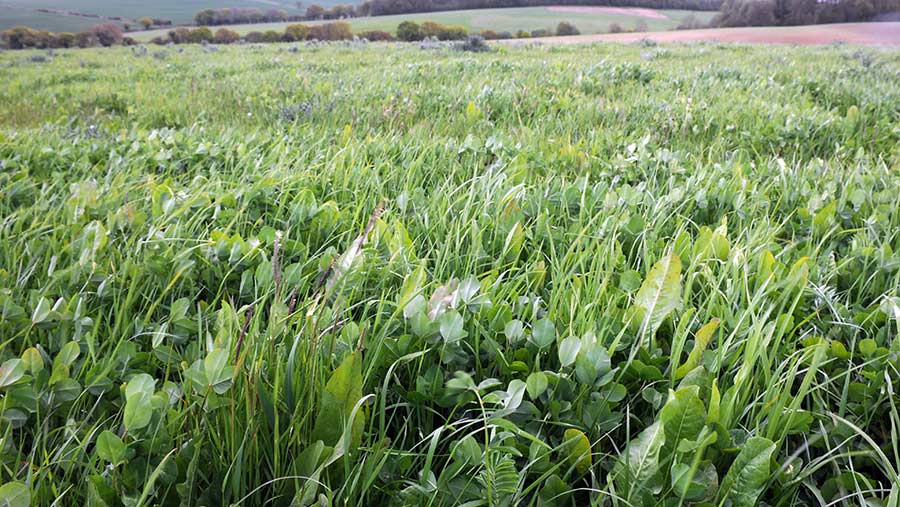7 tips to increase grass yield and quality
 © Hugh Nutt
© Hugh Nutt Some 40% of all soils analysed on UK grassland farms are deficient in phosphate and potash (P and K), halving potential dry matter yields.
In a wake-up call to grassland farmers attending the 2017 Grassland & Muck event, Jonathan Telfer of fertiliser manufacturer Yara urged the industry to focus on achieving a soil pH value of between 6.5 and 7.5 to improve the efficiency of nitrogen, phosphate and potash (NPK).
“Balanced and adequate soil nutrition is critical to producing more grass and forage,’’ he told farmers attending a forum on raising grass yield and quality.
See also: More news from Grassland & Muck 2017
Mr Telfer said recent samples analysed by Yara also showed other fundamental issues:
- 25% of all soils analysed had a pH lower than 5.5
- 40% of samples had the incorrect index for phosphorous
- Two-thirds of samples were below sulphur guidelines
- Half the samples were deficient in copper, two-thirds in cobalt and three-quarters in zinc and selenium
These are his top tips for improved grass yield and quality:
- Pay attention to soil structure – well-aerated soils warm up quickly and more air and water is available to grass swards
- Identify and correct limiting factors before starting nutrient programmes
- Improve NPK efficiency by correcting soil pH. NPK is most available to the soil when pH is between 6.5 and 7.5. Maintenance of pH is critical because if that drops, mineralisation is slow.
- Nitrogen is the main driver for yield – apply at 160kg/ha to first-cut silage and 150kg/ha to second-cut.
- Analyse slurries – the potash content of slurries analysed by Yara never match book values, as it is influenced by seasonal variations
- Do the sums – calculate the nutrients required on a field-by-field basis
- Develop a balanced nutrient management plan for every field
